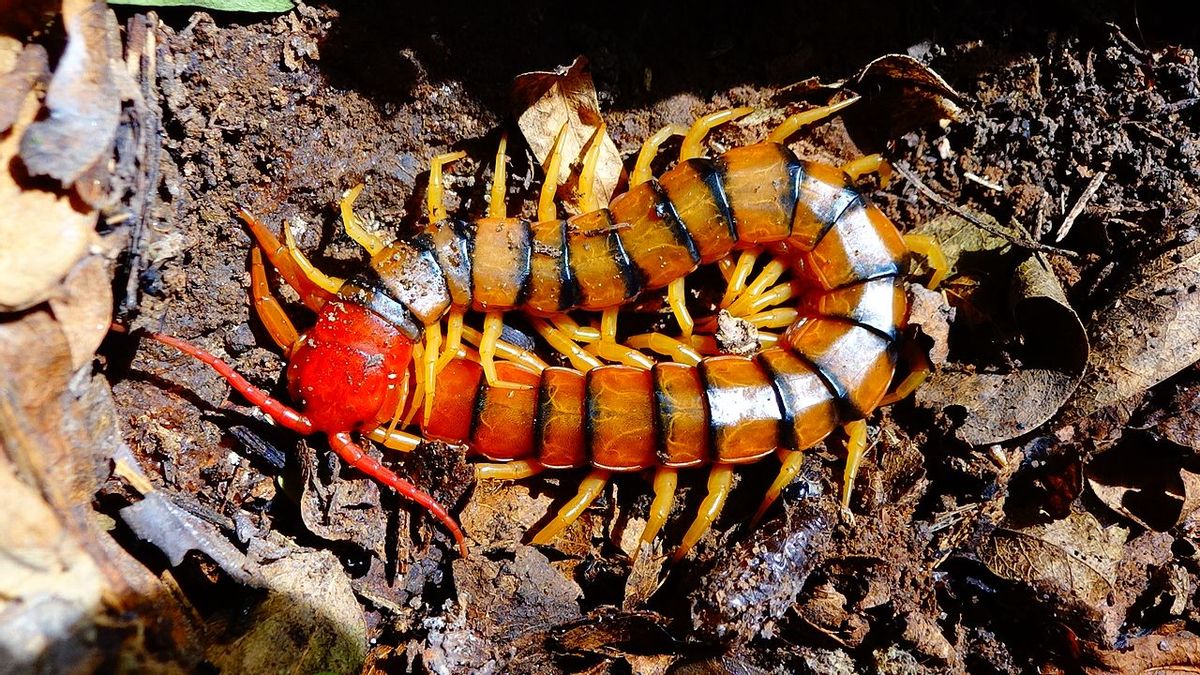Fact Check
The name “centipede” implies that this creature has exactly 100 legs, but the truth is more complicated than that. In reality, centipedes can have a widely varying number of legs that is never found to be exactly 100 in number. The misconception grew from the Latin root of the name, which combines centum, meaning “hundred,” and pes or ped, meaning “foot.”
The misconception is frequently challenged online, for example in a Reddit post that pulled from Wikipedia the claim that “no species of centipede has exactly 100 legs.”
This is correct. According to the National Park Service, “Despite "centi" in their name, which implies 100 legs, centipedes can have fewer than 20 legs to more than 300 legs, but they always have an odd number of pairs of legs.”
Centipedes’ bodies are made up of individual segments, with only one pair of legs per segment. They are arthropods, which means they have a non-living exoskeleton.
Studies and reports have concluded that the number of leg pairs is always odd, making it impossible for any given centipede to actually have exactly 100 legs. According to the Australian Museum in Sydney, for example, the name centipede is a misnomer because “the number of pairs of legs in centipedes is always an odd number and the known range is between 15 and 191 pairs.”
A 2017 report in the National Library of Medicine stated:
Contrary to the trivial name centipedes, literally suggesting the presence of 100 legs, adult representatives of scutigeromorph, lithobiomorph, and craterostigmomorph species possess 15 post-forcipular pairs of legs. Scolopendromorph species possess 21 or 23 pairs of legs (Fig. 3E; but also 39 or 43 pairs have been recorded in Scolopendropsis duplicata Chagas-Júnior, Edgecombe & Minelli, 2008), while Geophilomorpha may possess up to 191 pairs of legs, with males usually having fewer legs.
Another report published in 2004 by University of Cambridge developmental biologists in Cell Press and as reported in Science Direct argues the same:
Centipedes are a familiar group of arthropods characterized by a long body made up of individual segments, each with its own pair of legs. Despite their familiarity, they actually represent a developmental mystery. The number of leg pairs in different centipede species varies between 15 and 191 pairs, but this number is always odd. This suggests that the range of body forms that are theoretically possible is restricted by constraints we have not yet recognized.
The report also states a possible reason for why the number of leg pairs are odd in the first place (emphasis ours), pointing out that one segment of the centipede's body carry modified legs that serve as poison claws:
The researchers found a series of genes that initially define a two-segment periodicity in the forming trunk of the S. maritima embryo. This periodicity then resolves to give single segments, which later develop a pair of legs each. If segments are defined two at a time, evolutionary changes would add or remove segments in pairs, so that only certain numbers of leg-bearing segments are possible. Why then odd numbers rather than even? The authors leave this question open, but they suggest that additional segments that do not bear legs are also formed with this mechanism. Most noticeably, the centipede trunk includes a pair of poison claws that are probably modified legs. If these are counted, centipedes actually have an even number of trunk segments.
According to the Encyclopedia of Toxicology (emphasis ours):
Centipedes are nocturnal multisegmented elongated arthropods known for the distinct feature of having a pair of legs for each body segment except for the last. The first pair of legs on the cranial segment is, in actuality, modified into a pincerlike apparatus, known as forcipules, used to inject venom into prey.
Given that all studied centipedes have an odd number of leg pairs, there has been no discovery of a centipede with exactly 100 legs. We can conclude that no centipedes actually have 100 legs, and their actual leg numbers vary widely.

